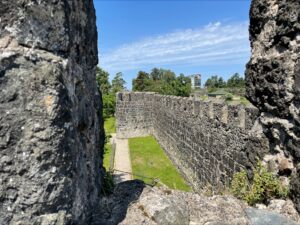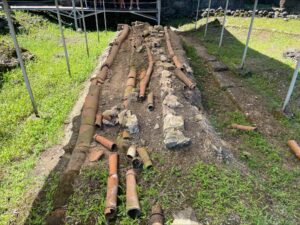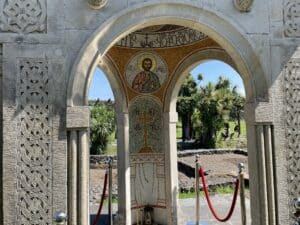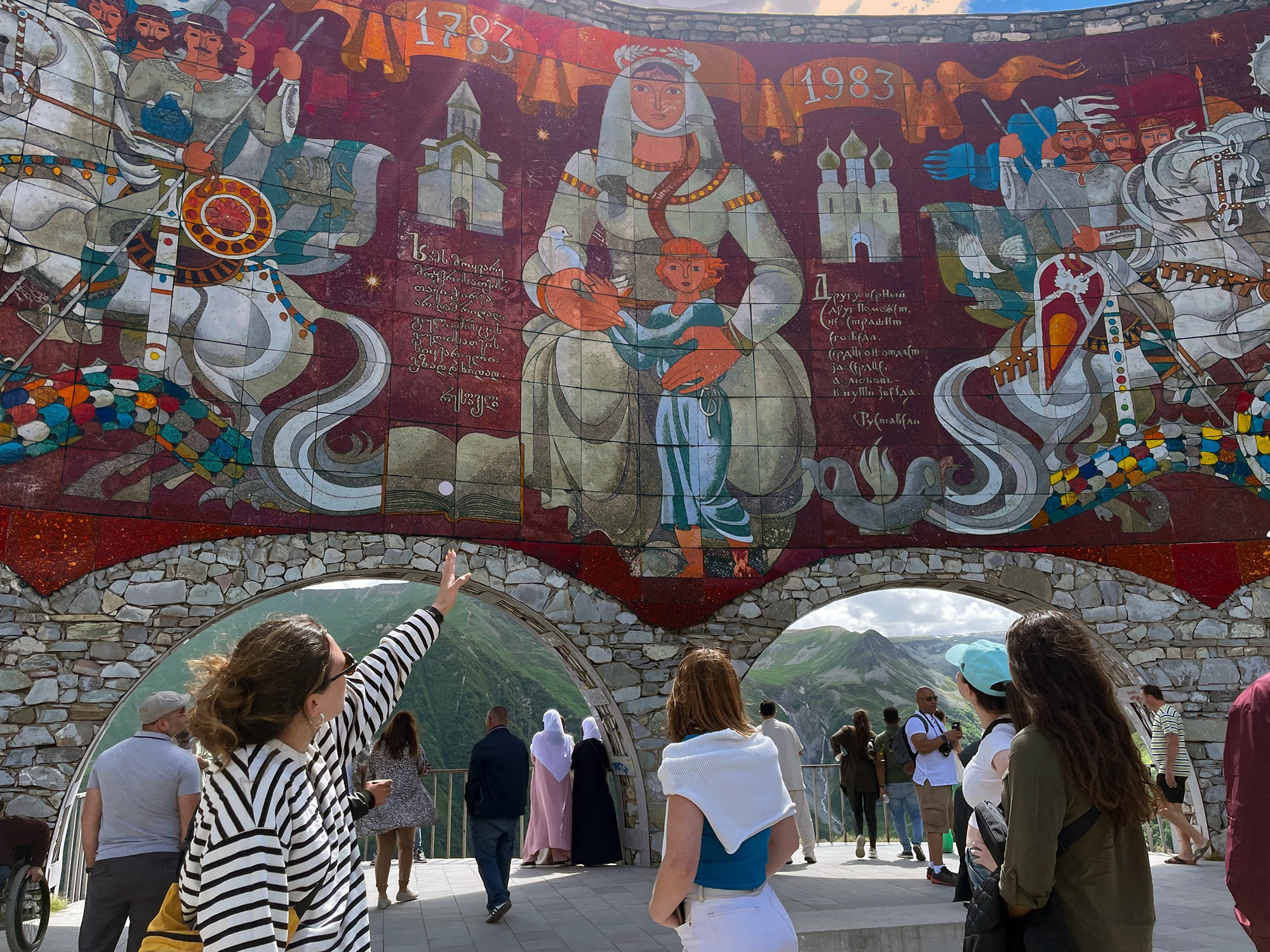The Fortress of Gonio, located in Adjara, Georgia, is an ancient Roman fortification dating back to the 1st century AD. A strategic point along the Black Sea coast, over the centuries, it was expanded and fortified by the Byzantines and Ottomans. Today, the well-preserved remains of Gonio Fortress stand as an important cultural and archaeological site, attracting tourists and researchers. SRAS students are regularly taken to this unique site to learn about the rich history of the area.
Visiting Gonio Fortress, Spring 2024
By Brendan Thompson, University of Texas, Arlington
The Emperor Hadrian is perhaps best known for his construction of a wall in Caledonia (now located in modern Great Britain). During my travels in the lands of Colchis (now located in modern Georgia), I happily discovered that he also presided over the bolstering of Gonio Fortress, another feat of masonry once located in the Roman empire’s distant marches. Both constructions on Rome’s former frontiers today provide persisting evidence of the wonders achieved during the apogee of the Roman Empire’s prosperity and power.
Gonio is the 1st century citadel that was called Apsaros in Roman times. Hadrian attempted to consolidate, through able administration, the gains that were acquired by victorious conquest. To achieve this, he committed a garrison to the colony of Bathus, now known as Batumi, and ordered nearby Gonio Fortress, first built under Roman Emperor Vespasian, to be expanded.



Gonio’s mighty walls loom over the visitor, immediately impressing awe in the one who beholds them. The visitor enters the gates meekly as if doing so with the permission of the citadel, for access would surely be denied to him if the legionaries occupying it declined one’s entry. As I stepped into the fort, I attempted to take a photo which would include the fortress walls and the space held between them. I had difficulty in doing this on account of the amazing size of the fort. Gonio Fortress once a held a full village that helped support its troops. Inside, for instance, are the remains of a full Roman bath. I found it marvelous that one can still see the pipes which supplied the baths with running water.

Just as London and Paris, two of the great cities of the Western world today, began as fortified Roman settlements, so too do we see a similar development occurring in Gonio albeit to a lesser extent. While the village once inside the walls is gone, the village that sprung up outside still exists.
Gonio is also the location of what the Georgians believe to be the grave of Saint Matthias, who replaced Judas Iscariot in the company of the Apostles. I remember thinking that this an appropriate resting place for him as the apostles had labored so fervently to evangelize Rome and to bring Christianity to Georgia. The religion still holds firm in both places.
As someone who has studied and is enthralled by Roman history, I greatly enjoyed exploring these grounds where legionaries once trained and marched. Gonio Fortress stands as both a testament to the surprisingly powerful and widespread influence of the Roman Empire and to the rich history of Georgia.
You’ll Also Love

Soviet Mosaics in Georgia: Controversy, History, and Fascination
I can’t put my finger on what sparked my interest in Soviet-era mosaics, but at this point, I’m obsessed. As someone who grew up in the US, it’s a rather foreign thing to see the sides of entire buildings decked out in brightly colored scenes made of tiles. It also contradicts what many people believe […]